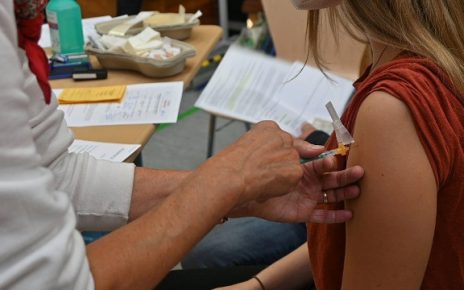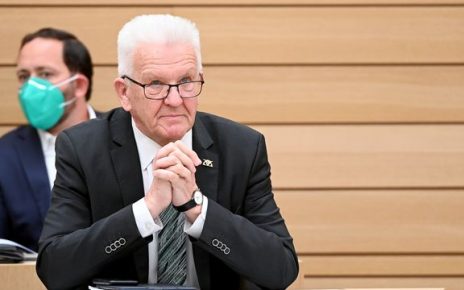By Carol Ann Weber
No matter how sophisticated our knowledge of the latest training techniques, some people still view yoga as a passive, non-strengthening workout. You know the stock picture in most people’s heads: spend most of the hour twisting yourself into a pretzel and end the session in lotus position, OHM-ing as candles flicker and the teacher strikes the gong. Sure, yoga is great for flexibility and relaxation – but muscle building?
“If all you’re looking to do is build muscle, weight training is the more practical approach,” says Nicholas DiNubile, M.D., author of FrameWork: Your 7-Step Program for Healthy Muscles, Bones, and Joints. “However, yoga can be just as effective as weights when it comes to developing a stronger, more impressive physique – especially when the two are used together.”
The essential focus in weight training is to isolate various muscle groups, and for maximum growth, work them to failure (exhaustion). In yoga, however, your muscles contract against the resistance of your own bodyweight in isometric fashion, and instead of being isolated, work together in what we call “functional movement,” which means that your body is actually performing in a coordinated manner to get you somewhere or to accomplish something. In addition, as you move through a sequence of poses (asanas), you simultaneously lengthen and strengthen your muscles. This not only results in better muscle tone, but longer and leaner muscles. Weight training breaks down and rebuilds muscle tissue via repetition of isolated movements, whereas yoga increases strength by lifting bodyweight, holding postures for extended periods, and balancing – which targets core muscles.
There are numerous forms of highly rigorous yoga that include moves and sequences that work every muscle in your body, including muscles you didn’t know you had! Power yoga, for example, was developed simultaneously in the mid-1990s by Beryl Bender Birch, based in New York, and by Bryan Kest, based in Los Angeles. It sprang from their practice of Ashtanga yoga, which they wanted to make more accessible to Western students. Power yoga is also associated with Baron Baptiste, who adds the element of a heated room.
Power Yoga Moves
Revolving Crescent
From mountain pose, step back with left foot, bending right knee to align with right ankle, left knee slightly bent, heel lifted. Inhale, extending arms overhead, palms together. Exhale, hinging at hips and rotating torso to right, placing left elbow on the outside of right thigh. With palms still together, look back past right elbow. Hold the rotation for 3-5 breaths. Inhale, bringing torso to an erect position, legs still in lunge as you extend arms overhead. Exhale, lowering arms to your sides, and step feet together, lifting torso and sweeping arms overhead, then down to mountain pose. Switch legs and repeat on opposite side. Repeat sequence once more on each side.
Plank-to-Leg Extension
From mountain pose, inhale and sweep arms overhead, then exhale to forward bend. Step feet back to plank pose, body forming a straight line from head to heels. Lift right leg to hip height. Inhale, then exhale as you bend right knee in toward chest. Inhale, extending right leg behind you, pressing hips upward, continuing to lift leg. Exhale, lowering leg and hips, and repeat knee pull and leg extension 4-6 times. After final rep, swing right leg forward to place foot on floor between hands. Bring feet together into forward bend. Inhale, lifting torso and sweeping arms overhead, then exhale as you lower arms to mountain pose. Switch legs and repeat. Repeat sequence once more on each side.
Warrior III
From mountain pose, place hands on hips and extend right leg behind you, with toes lightly touching floor, leg straight, left knee slightly bent, torso erect with shoulders and hips square. Inhale, then exhale as you hinge forward from hips until torso is parallel to floor, bringing right leg even higher so it aligns with torso. If you can keep your balance, extend both arms forward in line with torso, fingers interlaced and index fingers pointing forward. Hold for 3-5 breaths, then slowly stand up, placing right foot back on floor and lowering arms to return to mountain pose, and repeat on opposite side. Repeat once more on each side.
Bikram
Another kick-butt brand of yoga is Bikram, which includes a specific sequence of 26 poses performed for 90 minutes in a heated room. Founder Bikram Choudhury, a renowned Hatha Yoga Master, developed Bikram Yoga over 30 years ago and the practice has an almost cult-like following. Here are a couple of challenging poses:
Poorna Salabhasana (Full Locust Pose)
Lying on your stomach, extend both arms out to the sides, palms down. As in Locust, raise your head and rest your chin on the floor. Keeping your legs together, point your toes, lock both knees, and tighten all the muscles in the legs and hip area. Keeping them tensed will prevent you from letting your knees or feet fly apart when you finally get into this “airplane” pose. Start with a big inhale, raise your head and chin off the floor to look at the ceiling, and in one movement, raise both arms, both legs and your entire torso off the floor. Your arms are now lifting up and moving backward slightly, looking like the wings on your personal jet. Your palms face the floor, fingers together. The fingertips should be level with the top of your head, palms parallel to the floor.
Begin 80/20 Breathing.* Ideally you will use the muscles of the middle and lower spine to remain perfectly balanced on the hip bones for 10 honest seconds. Come down slowly. Turn your head to one side, arms relaxed at your sides, and rest facedown for 20 seconds in Savasana.
Second Set: Do Full Locust again for another 10 seconds, then rest for another 20.
*80/20 Breathing: Take a deep breath, lift your ribs. Engage and stretch your abdominal muscles, and then hold the breath as though you were about to go underwater. As you hold the posture, breathe normally, keeping your lungs 80 percent full. Exhale only the upper 20 percent of the breath and inhale into that upper 20 percent.
Dhanurasana (Bow Pose)
Lie on your belly with your hands alongside your torso, palms up. (You can lie on a folded blanket to pad the front of your torso and legs.) Exhale and bend your knees, bringing your heels as close as you can to your buttocks. Reach back with your hands and take hold of your ankles (but not the tops of the feet). Make sure your knees aren’t wider than the width of your hips, and keep your knees hip-width for the duration of the pose. Inhale and strongly lift your heels away from your buttocks and, at the same time, lift your thighs away from the floor. This will have the effect of pulling your upper torso and head off the floor. Burrow the tailbone down toward the floor, and keep your back muscles soft. As you continue lifting the heels and thighs higher, press your shoulder blades firmly against your back to open your heart. Draw the tops of the shoulders away from your ears. Gaze forward. With the belly pressed against the floor, breathing will be difficult. Breathe more into the back of your torso, and be sure not to stop breathing. Stay in this pose anywhere from 20 to 30 seconds. Release as you exhale, and lie quietly for a few breaths. You can repeat the pose once or twice more.
Along with the above, there are so many yoga formats that help you build great muscle tone, like Rodney Yee’s Yoga for Athletes, Anthony Carillo’s Iron Yoga (that incorporates the use of dumbbells in many of the poses), all forms of Hatha and Ashtanga, and the advanced poses in any practice, including Vinyasa flow, Kundalini and Yin Yoga.
More Yoga: Go With the Flow
Wring Out the Old to Bring in the New
Tone Legs, Strengthen Core and Improve Stamina
Improve Squats, Sprints, Glute Activation and More
The post Get Great Muscle Tone With Yoga first appeared on FitnessRX for Women.





